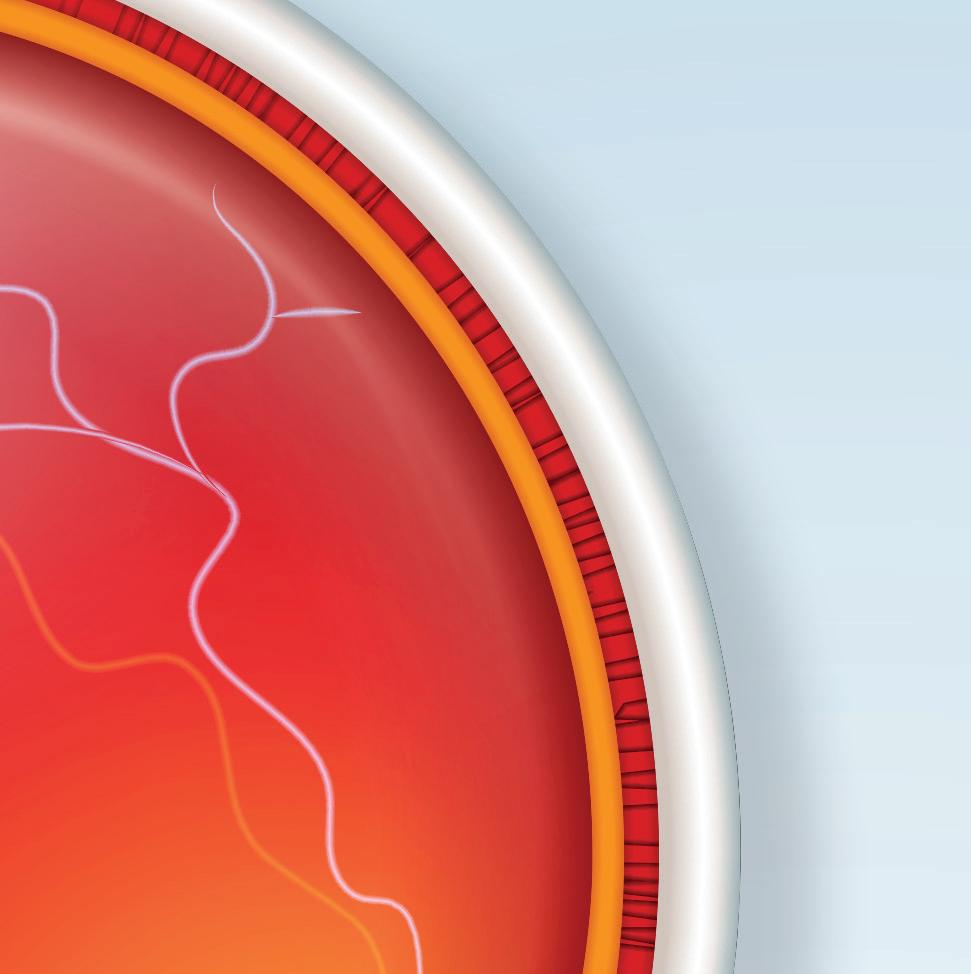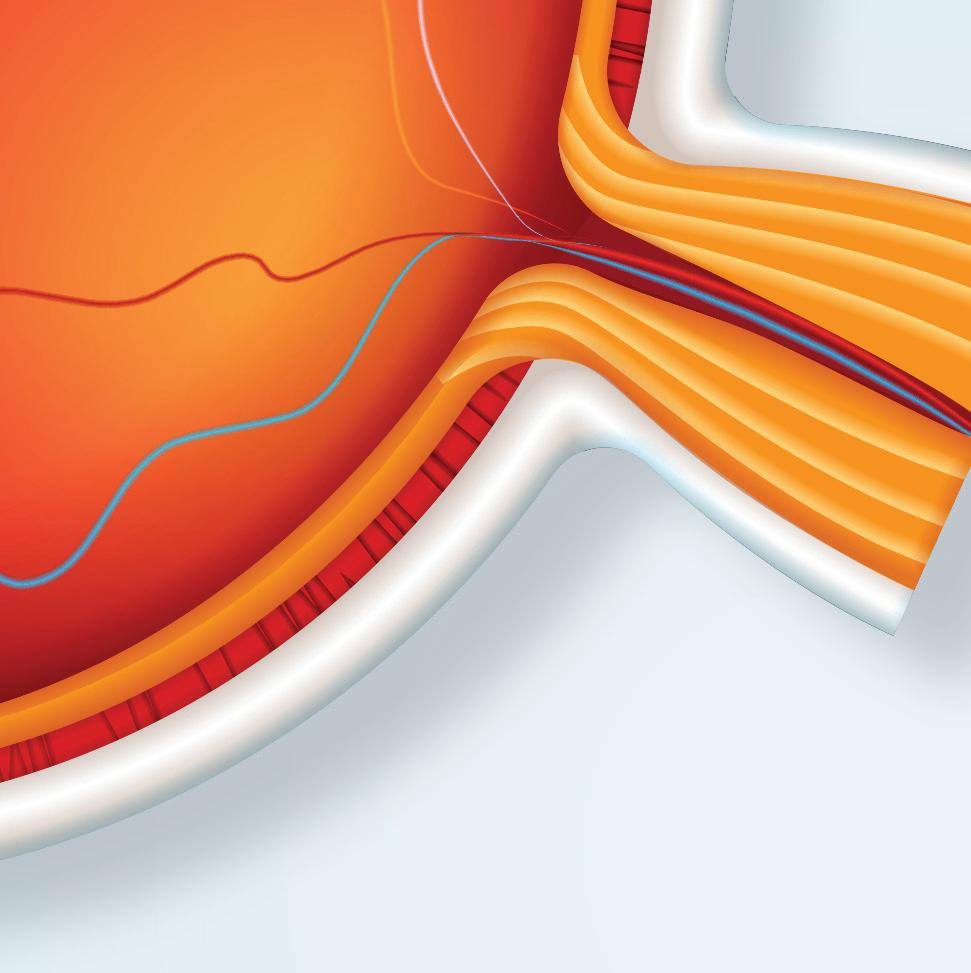
5 minute read
EYE SURGERY: A NEW VISION. Advanced
EYE SURGERY: A NEW VISION







ADVANCED TECHNOLOGY PROVIDES THE LATEST SOLUTIONS FOR COMMON VISION PROBLEMS.
When you look into someone’s eyes, you mostly see the clear, round dome of the cornea.
Unfortunately, in many cases, the other person may have trouble looking back. Vision problems known as refractive errors often occur when a misshapen cornea prevents light from focusing correctly on the retina at the back of the eye.
These problems include nearsightedness, or myopia (difficulty seeing things far away); farsightedness, or hyperopia (difficulty seeing things close up); and astigmatism (blurriness that can




affect vision both near and far).
Glasses or contact lenses can help, but surgery can provide long-term resolution of refractive errors and even cure more serious, degenerative eye diseases.
“This is an amazing time in eye care,” says Matthew Marano, MD, Section Chief of Ophthalmology at Saint Barnabas Medical Center (SBMC).
“Ophthalmology continues to evolve dramatically. Under the right circumstances, we can give you quality of vision that you wouldn’t have imagined 10 years ago.”
Three technologies illustrate how
SBMC’s Refractive Surgery Center can offer state-of-the-art treatments:
CUSTOMIZED BLADELESS LASIK
In LASIK (short for laser in situ keratomileusis) procedures, an excimer laser reshapes the cornea so it focuses better. But first, a thin flap must be cut in the upper layer of the cornea to provide access to layers below.
Traditionally, this is done with a physical cut, made with an instrument called a microkeratome. “At the Refractive Surgery Center, we use a second laser called a femtosecond laser to make the flap,” Dr. Marano says. “In many patients, this allows faster healing. The patient can drive or work the next day.”
The excimer laser also can be finely calibrated to a patient’s eye. “It’s almost like we take a fingerprint,” Dr. Marano says. “We can get people to see better than they ever did with contacts or glasses.”
It’s important to talk with an ophthalmologist about whether you’re a candidate for LASIK. “Most concerns people have about LASIK come from situations in which people were not evaluated properly preoperatively,” Dr. Marano says.
COLLAGEN CROSS-LINKING
Some refractive problems aren’t easily resolved with glasses or contacts. In a disease called keratoconus, the normally round cornea becomes progressively thinner and more cone-shaped starting as young as a person’s teens. “It’s a very unstable condition that causes a tremendous amount of distortion and requires changing your prescription frequently,” Dr. Marano says. “Vision diminishes significantly.” The condition often triggers glare and vigorous eye rubbing that can make eyesight even worse. Many patients eventually require a corneal transplant.
Fortunately, a recently FDA-approved treatment called corneal or collagen crosslinking can strengthen and stabilize the cornea by creating new links between collagen fibers in the eye. The minimally invasive treatment involves first bathing the eye in the vitamin B compound riboflavin for about 30 minutes, then exposing it to ultraviolet light.
“We’re the only hospital-based facility on the East Coast, and one of the few in the country, to offer this,” Dr. Marano says. “We’re able to proactively prevent keratoconus progression and maintain quality of vision for decades.”
YAG LASER
Cataract surgery is a removal of a clouded lens in the eye and its replacement with a clear artificial lens known as an intraocular lens, or IOL. Most cataract surgeries provide clearer vision without further problems. Sometimes, though, substituting a clouded lens with an IOL triggers cell growth. This in turn can calcify and fog a layer of tissue on the capsule that holds the lens in place—a complication known as posterior capsule opacification (PCO).
PCO can be corrected quickly and permanently with a noninvasive, painless procedure called YAG laser capsulotomy. “It takes only one to five minutes and there are no restrictions on activity afterward,” Dr. Marano says. The low-energy YAG (short for yttriumaluminum-garnet) laser cuts the clouded membrane from the patient’s line of sight without the need for an incision. “It’s very precise, requires no anesthesia and has no capacity for infection,” Dr. Marano says.
The YAG laser can also be used to treat floaters in the vitreous fluid between the lens and retina, along with certain forms of glaucoma, a category of eye conditions in which pressure damages the optic nerve.
“The Refractive Surgery Center has been providing the latest technology for over 20 years,” Dr. Marano says. “We also can treat many irregularities of the cornea non-surgically, including dry eye, lowgrade allergies and infections.”
5 WAYS TO TAKE CARE OF YOUR EYES

Guard against preventable damage to your eyes with these protections suggested by Saint Barnabas Medical Center ophthalmologist Matthew Marano, MD. GET CHECKED: Schedule an eye exam every year not only to make sure a corrective lens prescription is sharp but also to check the health of your cornea, retina and optic nerve. WEAR PROTECTION: When outside, put on sunglasses that ward off the harmful effects of ultraviolet rays, which are linked to numerous eye problems.
TAKE DISCOMFORT SERIOUSLY:
Don’t ignore eye pain, injury or discomfort, which could indicate or put you at risk for a variety of serious conditions. See an eye specialist.
EAT EYE-HEALTHY FOODS:
Consuming a healthy diet that’s low in fatty junk food and rich in fruits and vegetables provides a variety of nutrients shown to benefit eye health. Foods that are particularly good for eyes include leafy greens, nuts, eggs, fish, legumes and citrus fruits.


TAKE SCREEN BREAKS: Look away from any screen for about 20 seconds at least every 20 minutes to minimize exposure to blue light, which can cause dry eyes and eyestrain.
To learn more about services at the Refractive Surgery Center at Saint Barnabas Medical Center, call 973.322.7185 or visit www.rwjbh.org/bhacc.










